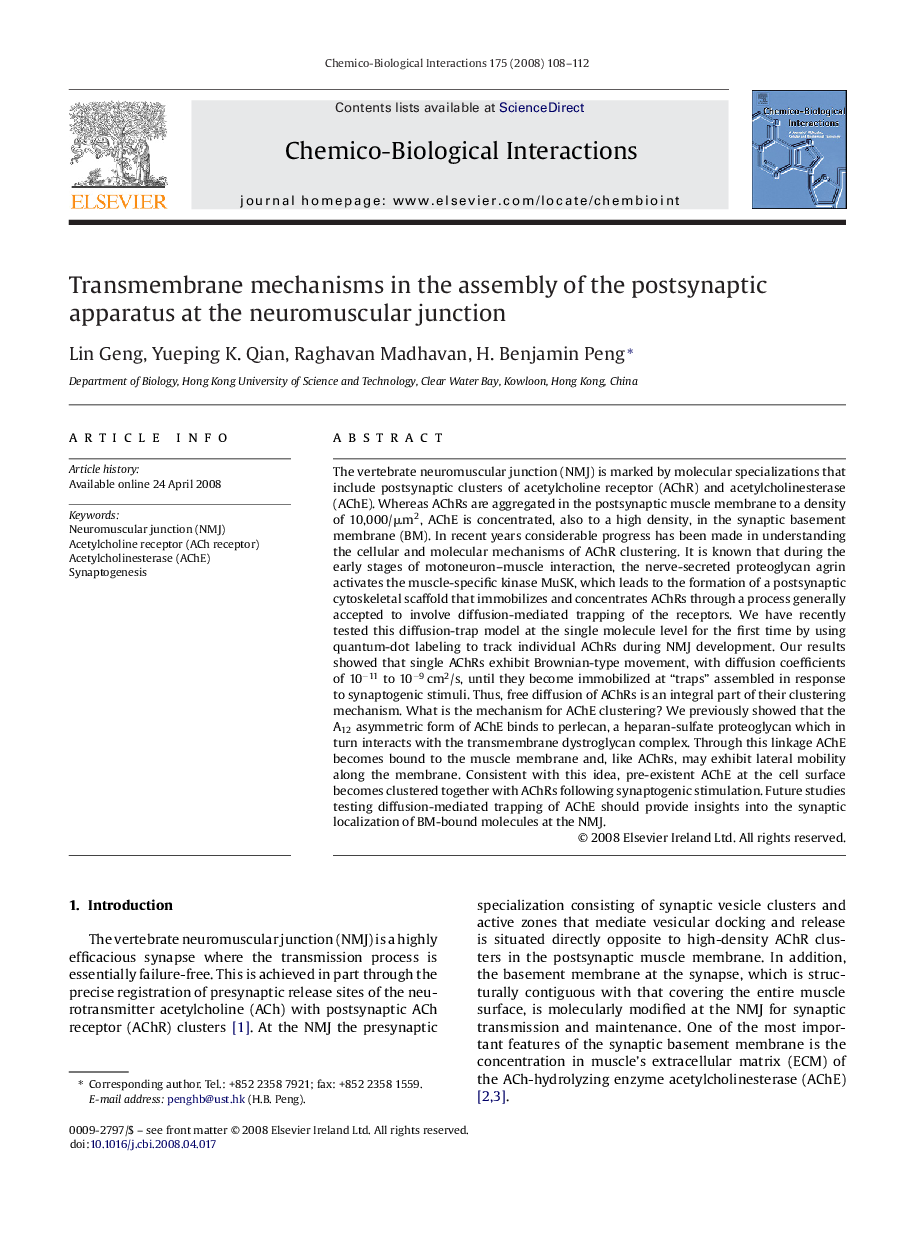| کد مقاله | کد نشریه | سال انتشار | مقاله انگلیسی | نسخه تمام متن |
|---|---|---|---|---|
| 2581566 | 1561653 | 2008 | 5 صفحه PDF | دانلود رایگان |

The vertebrate neuromuscular junction (NMJ) is marked by molecular specializations that include postsynaptic clusters of acetylcholine receptor (AChR) and acetylcholinesterase (AChE). Whereas AChRs are aggregated in the postsynaptic muscle membrane to a density of 10,000/μm2, AChE is concentrated, also to a high density, in the synaptic basement membrane (BM). In recent years considerable progress has been made in understanding the cellular and molecular mechanisms of AChR clustering. It is known that during the early stages of motoneuron–muscle interaction, the nerve-secreted proteoglycan agrin activates the muscle-specific kinase MuSK, which leads to the formation of a postsynaptic cytoskeletal scaffold that immobilizes and concentrates AChRs through a process generally accepted to involve diffusion-mediated trapping of the receptors. We have recently tested this diffusion-trap model at the single molecule level for the first time by using quantum-dot labeling to track individual AChRs during NMJ development. Our results showed that single AChRs exhibit Brownian-type movement, with diffusion coefficients of 10−11 to 10−9 cm2/s, until they become immobilized at “traps” assembled in response to synaptogenic stimuli. Thus, free diffusion of AChRs is an integral part of their clustering mechanism. What is the mechanism for AChE clustering? We previously showed that the A12 asymmetric form of AChE binds to perlecan, a heparan-sulfate proteoglycan which in turn interacts with the transmembrane dystroglycan complex. Through this linkage AChE becomes bound to the muscle membrane and, like AChRs, may exhibit lateral mobility along the membrane. Consistent with this idea, pre-existent AChE at the cell surface becomes clustered together with AChRs following synaptogenic stimulation. Future studies testing diffusion-mediated trapping of AChE should provide insights into the synaptic localization of BM-bound molecules at the NMJ.
Journal: Chemico-Biological Interactions - Volume 175, Issues 1–3, 25 September 2008, Pages 108–112